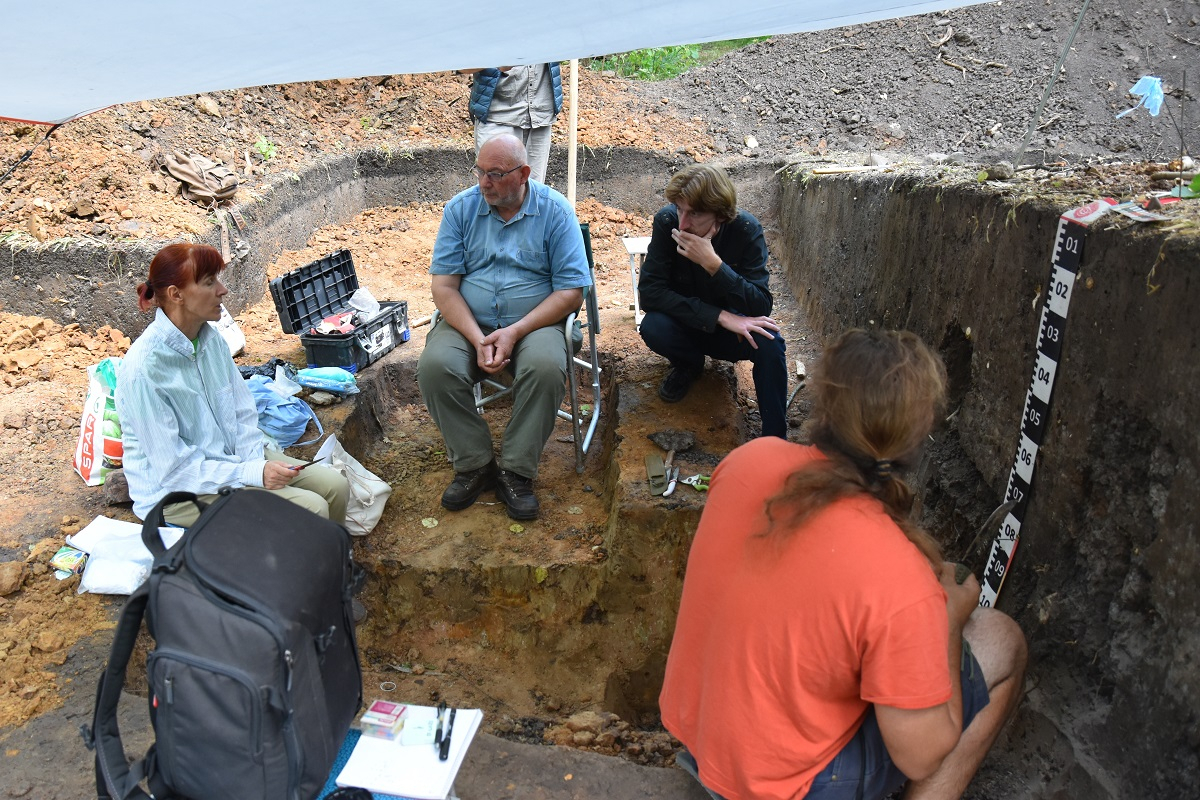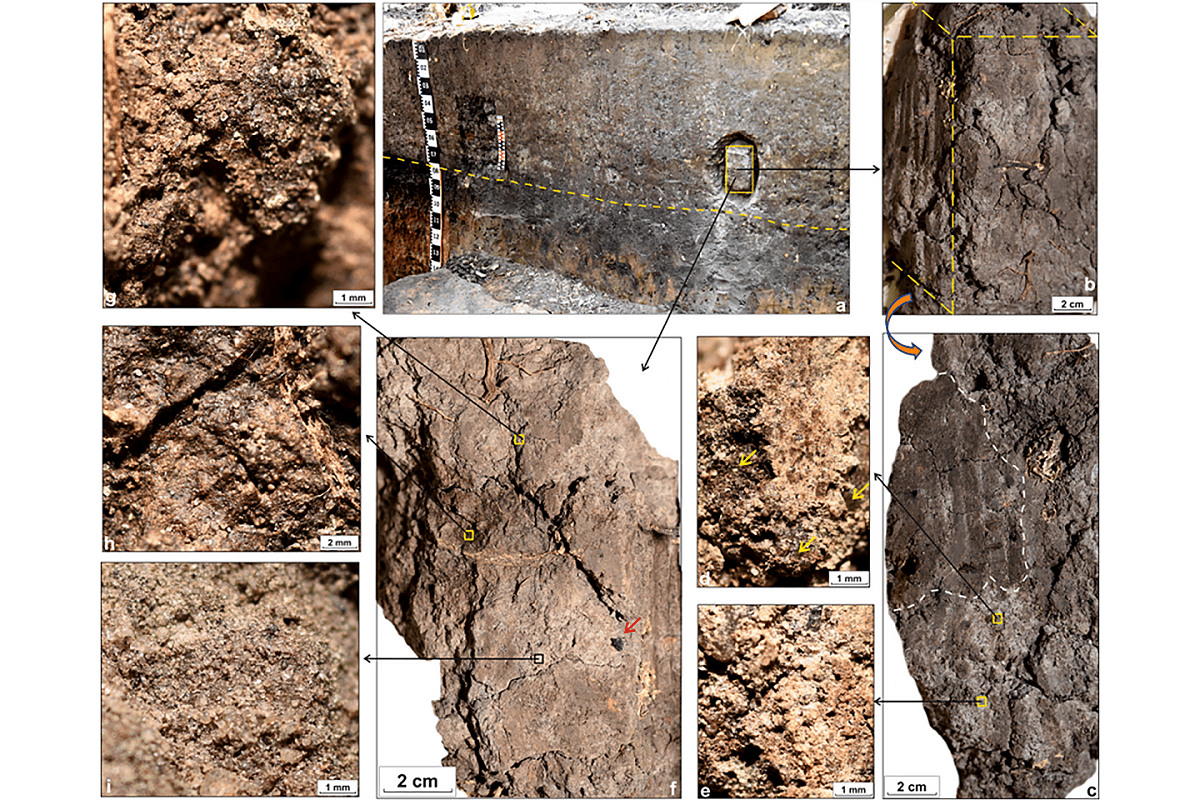Scientists from St Petersburg University date an ancient kurgan cemetery in the Lipetsk Region using soil analysis
As part of a team of Russian researchers, specialists from St Petersburg University have analysed the soils of the ancient Rublevka kurgan cemetery in the Lipetsk Region, dating it to the 3rd century AD. The University’s researchers also reconstructed the climatic conditions of that period.

Soils serve as indicators of the climatic and landscape environment in which they develop. Their profiles reflect various characteristics that mark the stages of development of both the soils themselves and the broader landscape. By conducting a detailed analysis of chronological series comprising both present-day (background) and ancient samples, scientists are able to reconstruct the environmental evolution of a given region.
The findings of the research supported by a grant from the Russian Science Foundation are published in the scientific journal Catena.
Soils buried beneath archaeological monuments are particularly well-suited for study, as they are completely isolated from external influences. These samples preserve information about the specific natural conditions at the time of burial and serve as a kind of encyclopaedia for researchers.
One such site is the Rublevka kurgan cemetery, located in the central forest-steppe zone of the Zadonsky District in the Lipetsk region, dated to the Early Iron Age (1st millennium BC). The specialists from St Petersburg University, Lomonosov Moscow State University, the Institute of Physicochemical and Biological Problems of Soil Science of the Russian Academy of Sciences, and the V.V. Dokuchaev Central Museum of Soil Science are working on the study.

The scientists from St Petersburg University analysed the buried and surface soil layers using a wide range of field and laboratory methods, including microbiomorphic analysis, which makes it possible to study organogenic remains (such as phytoliths and pollen-spore spectra).
We were able to determine the time of burial by radiocarbon dating of charcoal fragments in the humus horizon and compare the results with archaeological data. It was established that the kurgan cemetery under study belongs to the Late Sarmatian culture and was constructed in the 3rd century AD.
Professor Aleksey Rusakov, Acting Head of the Department of Soil Science and Soil Ecology at St Petersburg University
According to Professor Aleksey Rusakov, Acting Head of the Department of Soil Science and Soil Ecology at St Petersburg University, although the upper part of the ancient soil was disturbed during kurgan construction, it was still possible to determine that its structure and properties are similar to those of present-day soils. Additionally, the researchers found that the climatic conditions at that time were close to those of the present day, although the buried samples had a darker colour in the upper horizons and a higher content of organic carbon and iron oxides.
According to the specialists, the analysis also indicated that the forest in the 3rd century AD was less mature and less diverse, consisting predominantly of small-leaved, young trees with sparse undergrowth—suggesting that the region had a drier climate in antiquity than it does today.
St Petersburg University is among the leaders in the number of grants from the Russian Science Foundation. In 2022, St Petersburg University researchers received 112 grants, which is 5.5% of the total number of winning projects and the largest number of grants for one organisation. At the same time, 25% of the funded projects are led by early-career researchers. In 2023, the University maintained its leadership in this contest of the Russian Science Foundation: scholars from St Petersburg University received 70 grants, which is 5% of the total number of winning projects. St Petersburg University submitted 214 applications for the 2023 contest, and almost one in three of them was supported.
A structural study of the kurgan cemeteries revealed that the ancient tribes employed complex burial rites reflecting their beliefs about the afterlife. The kurgan cemetery itself, the researchers note, has a sophisticated structure: its base consists of an earthen platform approximately half a metre high and 10–11 metres in diameter, built from earthen bricks laid in alternating layers of different colours. The dark layers are well compacted, while the light ones contain particles of aquatic plants, indicating the use of river sand in the construction. The upper part of the kurgan cemetery is covered with a 20–30 cm thick layer of soil.
The scientists also analysed samples taken from beneath the ring-shaped embankments of the ritual zone. As the authors of the study pointed out, examining the materials used to form the bricks is a powerful tool for palaeogeographical reconstructions.
Professor Aleksey Rusakov, Acting Head of the Department of Soil Science and Soil Ecology at St Petersburg University, spoke about the work of soil scientists from the University and the legacy of the eminent University scholar and founder of this scientific field, Vasily Dokuchaev, in St Petersburg University’s popular science podcast "Heinrich Terahertz".
"Their presence in the composition of the earthen bricks is independent evidence that these horizons were already formed in the Early Iron Age. The technologies used in constructing earthen mounds are important for archaeology and can help to decipher the cultural code of ancient tribes," said Alexander Makeev, Leading Research Associate at the Soil Science Faculty, Lomonosov Moscow State University.
According to Daria Mikhailova, a doctoral student at Lomonosov Moscow State University, the integrated study of burial monuments and the ancient layers buried beneath their embankments enhances the effectiveness of research into the evolution of the natural environment, the reconstruction of past climatic and landscape conditions, and the study of the history of civilisations.
St Petersburg University, the oldest university in Russia, was founded on 28 January (8 February) 1724. This is the day when Peter the Great issued a decree establishing the University and the Russian Academy of Sciences. St Petersburg University today is a major centre for education and research. More than 20,000 students study here, and more than 15 major laboratories and 23 resource centres have been established as part of the country’s leading Research Park. Graduates of the University have been recipients of the Nobel and Fields Prizes on multiple occasions.
Recently, St Petersburg, the Northern Capital of Russia, officially introduced a new holiday—Day of St Petersburg University—which has been included in the St Petersburg Law "On holidays and commemorative days in St Petersburg". In February 2025, a ceremonial event was held, during which Roscosmos cosmonauts presented the University with the ‘300th anniversary of St Petersburg University’ flag, which had travelled to the International Space Station and back.

